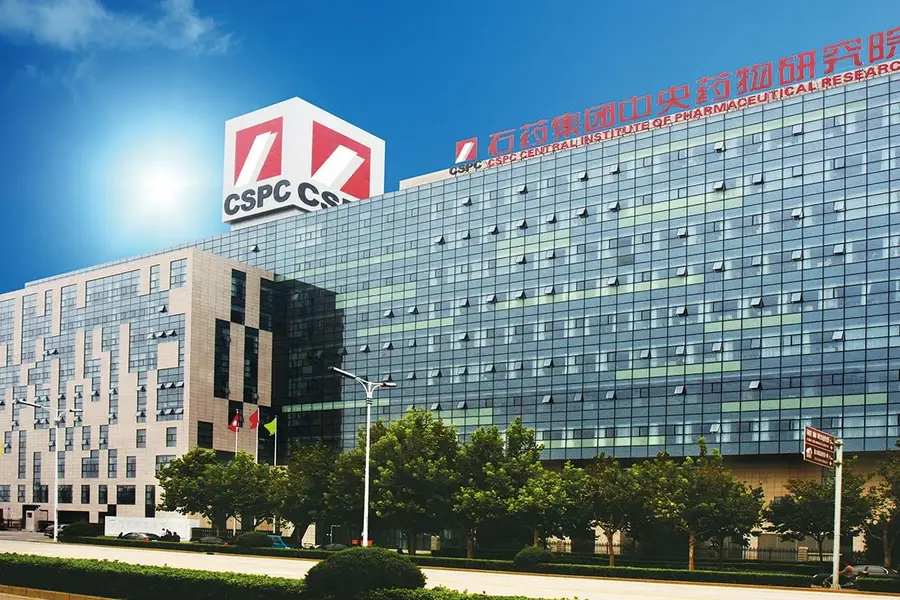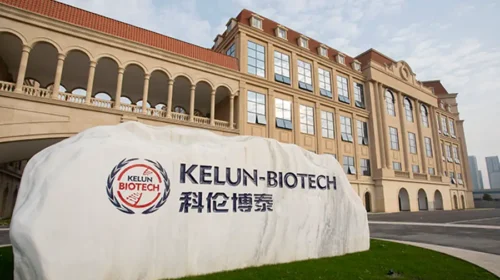CSPC feels the pain from sweeping cuts in drug prices

The pharmaceutical giant is paying the price for its aggressively low bids in China’s centralized drug tenders, as it shifts its focus from traditional to novel drugs
Key Takeaway:
- The company delivered lower nine-month revenues and profits after slashing its unit prices to compete in China’s drug procurement process
- Bucking the sector trend, CSPC’s stock has tumbled as its innovative drug pipeline has yet to make up for the shortfall from generic products
By Molly Wen
In business as in medicine, a remedy can take time to kick in.
This is the challenge for Chinese drug giant CSPC Pharmaceutical Group Ltd. (1093.HK), which is trying to transform itself from being a supplier of established medications to a creator of innovative therapies.
The transition is proving painful. Despite heavy investment in R&D, the benefits from the strategy shift have yet to translate into a rising bottom line, while the company’s legacy business remains under pressure.
Deeply discounted prices under China’s centralized drug procurement process have delivered a heavy blow to sales of CSPC’s finished drugs, weighing on the company’s overall profit performance.
In CSPC’s latest earnings statement, revenues for the first nine months of 2025 fell 12.3% to 19.89 billion yuan ($2.8 billion) from the same period a year earlier, while net profit slipped 7.1% to 3.51 billion yuan. The figures marked a continued slowing of earnings momentum. Last year CSPC suffered its first drop in both revenue and profit in a decade, as the top line took a 7.8% hit and the bottom line plunged 25.4%.
The company’s largest segment, finished drugs, was the main culprit. Income from fully produced and packaged drugs fell 17.2% to 15.45 billion yuan, accounting for roughly 77% of total sales. A host of drug types recorded big declines. Medications for the nervous system suffered a 21.6% drop, while oncology drug revenue plunged 56.8%. Sales of antibiotics slipped 22.7%, while cardiovascular medicines registered a drop of 17.8%. CSPC blamed the declines on the effects of national drug policies, including price-competitive mass procurement for pharmaceuticals covered by China’s medical insurance scheme.
At the latest national drug tender, CSPC was labelled a price slasher by industry observers for pitching its prices at aggressively low levels to edge out rival bidders.
CSPC was victorious, but at the cost of squeezing earnings. Fifteen CSPC products made it onto the procurement list, including anti-inflammatory apremilast tablets and enteric-coated aspirin. In eight of the 15 cases, CSPC was the lowest bidder, according to remarks by healthcare officials at a procurement symposium in December last year.
The body overseeing the tender noted that CSPC’s in-house ability to produce active pharmaceutical ingredients (APIs), coupled with advanced manufacturing capacity, allowed the firm to combine efficiency with stable product quality.
The bidding process slashed the price of the company’s core medicine, the chemotherapy drug doxorubicin liposome, marketed as Duomeisu. This was enough to deliver a sharp knock-on effect on earnings.
A volume-based procurement process in 2024 for cities and provinces including Beijing, Tianjin and Hebei had already resulted in a 23% price drop for the drug. In the national round this year the winning bid plunged to 98 yuan per unit, 97% less than the roughly 3,500 yuan in the 2024 process.
The price cut for this single product is set to wipe around 1.0 billion yuan to 1.5 billion yuan off 2025 earnings, according to a research note by BOCOM International.
Novel drugs yet to dull the pain
To soften the blow, CSPC has accelerated its shift from generic drugs to innovative medicines. In the first three quarters, the company’s spending on R&D rose 7.9% to 4.19 billion yuan, equivalent to 27.1% of its revenue from finished drugs. The company predicts R&D investment will rise a further 15% to 20% in 2026.
The pace of innovations is picking up. So far this year, CSPC has obtained three product approvals, had eight marketing applications accepted and gained five breakthrough therapy designations, as well as getting the green light for 42 clinical trials.
Progress has also been made with sales of drug rights to pharmaceutical partners, generating near-term cash flow and raising the global profile of CSPC’s discoveries.
In June CSPC announced a strategic collaboration with AstraZeneca worth up to $5.3 billion, with $110 million upfront. And in July, the Chinese company licensed global development and sales rights to a pre-clinical oral GLP-1 drug to U.S.-based Madrigal Pharmaceuticals. Under the deal, CSPC gets $120 million in upfront cash, plus up to $1.96 billion linked to development, regulatory and commercial milestones.
However, the high-profile deals have not masked the company’s weakening profitability. CSPC’s gross margin has fallen for five straight years, dropping from 72.3% in 2020 to 65.6% in the first nine months of 2025. On the equity market, the innovative drug sector has recently trended upward but CSPC’s share price has shed more than 35% over the past two and a half months.
Several brokerages have also lowered their target prices for the drug maker. Citing higher R&D spending, CICC cut its net profit forecast for CSPC by 12% to 4.76 billion yuan for this year and 15% to 5.35 billion yuan in 2026, as well as cutting its target price by 15% to HK$11.
Nomura noted that CSPC’s third-quarter revenue of 6.62 billion yuan was well below market expectations of 7.4 billion yuan. Highlighting weaker-than-expected drug sales and delayed inflows from collaboration projects, Nomura reduced its CSPC target price from HK$10.09 to HK$9.11.
The company has predicted a return to earnings growth in 2026, propelled by a ramp-up of new products such as Mingfule, which is used to treat blood clots, and the anti-cancer injection irinotecan liposome. The outlook could brighten by 2027 as the drag from volume-based procurement gradually subsides.
However, some rivals facing similar challenges look to be in relatively better shape. Jiangsu Hengrui Pharmaceuticals (1276.HK; 600276.SH), another firm shifting from generic to innovative drugs, delivered solid growth in the first three quarters and now trades at 57 times earnings, far higher than CSPC’s 19 times, reflecting divergent investor views on the companies’ prospects and innovation pipelines.
CSPC is seeking to improve its performance by selling the rights to its drug discoveries, but milestone payments have yet to emerge and may not fully offset the pressure on its core business.
To subscribe to Bamboo Works weekly free newsletter, click here





